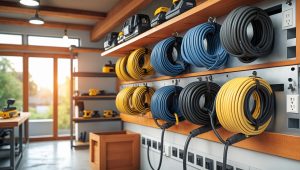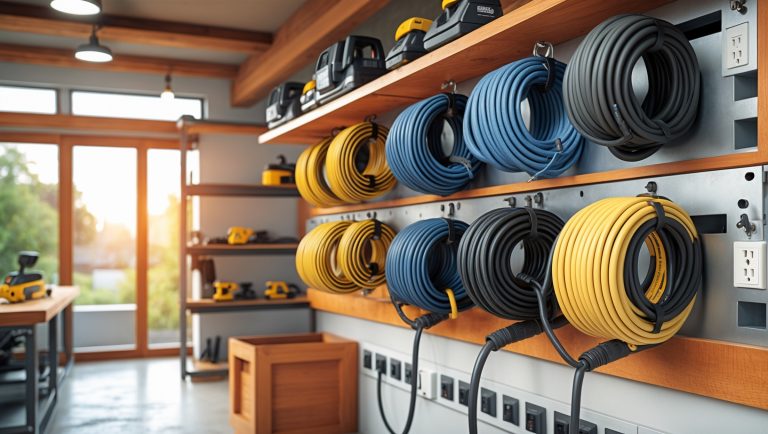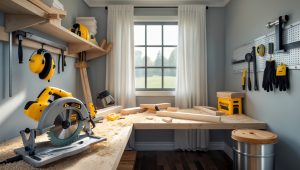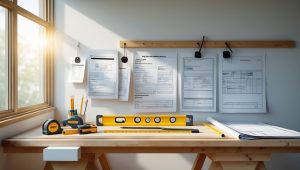Introduction: Why Smart Thermostat Integration Kits Matter for DIYers
Smart thermostats have revolutionized home climate control, offering energy savings, remote access, and intelligent scheduling. But for many homeowners, the biggest barrier to upgrading is integration—specifically, ensuring your new thermostat works seamlessly with your existing HVAC system. That’s where smart thermostat integration kits come in. These kits bridge the gap between advanced smart thermostats and the sometimes outdated wiring or hardware found in many homes. If you’re a DIYer looking to simplify your next home upgrade, choosing the right integration kit can mean the difference between a smooth, one-hour install and a frustrating, day-long ordeal.
This guide is designed for hands-on homeowners who want a hassle-free smart thermostat installation. We’ll compare the leading integration kits, break down compatibility, offer detailed setup guidance, and tackle common troubleshooting scenarios. If you’re ready to level up your home’s comfort and efficiency, but want to be confident in your toolkit and your process, read on for practical, expert advice.
Understanding Smart Thermostat Integration Kits
What Is a Smart Thermostat Integration Kit?
At its core, an integration kit is a collection of adapters, wiring modules, and sometimes relay devices that bridge compatibility gaps between smart thermostats and a wide variety of HVAC systems. These kits solve common problems like missing C-wires, incompatible voltage, or unique system architectures found in older homes.
- C-Wire Adapters: For systems lacking a dedicated common wire (C-wire), which is essential for powering most smart thermostats.
- Voltage Converters: For homes with line-voltage systems incompatible with most low-voltage smart thermostats.
- Relay Modules: For complex setups such as multi-stage HVAC, heat pumps, or dual-fuel systems.
Why Not Just Use the Thermostat Out of the Box?
While some homes are “plug-and-play” ready, many aren’t. Integration kits save you from running new wires through walls, hiring an electrician, or risking damage to expensive equipment. For DIYers, they’re the key to a professional-grade finish—without the professional price tag.
Top Smart Thermostat Integration Kits: In-Depth Comparison
Below, we compare the most popular and reliable integration kits on the DIY market. Selection criteria include ease of installation, compatibility, build quality, and included support resources.
1. Nest Power Connector
- Best for: Homes with no C-wire, compatible with Nest thermostats
- Included: Power connector, mounting hardware, detailed instructions
- Installation Difficulty: Low—color-coded wires, no need to access HVAC board in most cases
- Pros: Seamless integration, reliable power delivery, compact design
- Cons: Only works with Nest models, not universal
2. ecobee Power Extender Kit (PEK)
- Best for: Homes with no C-wire, compatible with ecobee thermostats
- Included: PEK module, quick-connect wires, adhesive backing
- Installation Difficulty: Moderate—requires access to furnace control board
- Pros: Reliable, supports multi-stage systems
- Cons: Not universal, requires opening furnace panel
3. Venstar Add-a-Wire Adapter
- Best for: Any low-voltage smart thermostat, homes missing extra wires
- Included: Adapter module, wiring harness, mounting tape
- Installation Difficulty: Moderate—requires basic wiring skills
- Pros: Universal compatibility, works with most brands
- Cons: Can be bulky inside tight control boards, limited support for complex HVAC
4. Honeywell C-Wire Power Adapter
- Best for: Honeywell smart thermostats, no C-wire situations
- Included: C-wire adapter, mounting hardware, step-by-step guide
- Installation Difficulty: Low to moderate
- Pros: Durable, clear instructions
- Cons: Not designed for non-Honeywell models
5. Aube RC840T-240 Relay
- Best for: Homes with line-voltage baseboard heaters
- Included: Relay module, wiring diagram
- Installation Difficulty: High—requires comfort with electrical wiring
- Pros: Enables smart thermostat use with high-voltage heating
- Cons: Not a DIY project for beginners, professional install recommended for safety
6. Lux GEO C-Wire Adapter
- Best for: Lux smart thermostats, basic C-wire adaptation
- Included: Adapter, wire labels, instructions
- Installation Difficulty: Low
- Pros: Simple, cost-effective
- Cons: Limited brand compatibility
How to Choose the Right Integration Kit for Your Home
Step 1: Identify Your HVAC System Type
Before you select an integration kit, it’s crucial to know your system’s wiring and voltage type. Remove your existing thermostat cover and look for the following:
- Number and color of wires: Most smart thermostats need at least four wires (often labeled R, W, Y, and G). A C-wire (common wire) is often blue or black.
- Voltage: Low-voltage systems (24V) are most common. Line-voltage (120V or 240V) systems require specialized adapters.
- System complexity: Heat pumps, multi-stage heating/cooling, and dual-fuel setups may need extra relays or modules.
Step 2: Match Kit to Thermostat Brand and Model
Most major smart thermostat brands (Nest, ecobee, Honeywell, Lux) offer their own integration kits, optimized for their hardware. Universal kits like the Venstar Add-a-Wire are ideal if you’re mixing brands or want flexibility for future upgrades.
Step 3: Assess Your Comfort Level with Electrical Work
Some kits require simple wire splicing at the thermostat location, while others demand access to the furnace control board or even working with high-voltage wiring. Choose a kit that matches your DIY experience, and never hesitate to hire a pro if you’re unsure—especially with line-voltage systems.
Step 4: Consider Support and Troubleshooting Resources
Look for kits that come with:
- Clear, visual instructions
- Online video tutorials
- Customer support (phone, chat, or email)
- Active online user communities
If you hit a snag, robust support can save you hours of frustration.
Step-by-Step Setup: Installing a C-Wire Adapter Kit
Below is a general guide for installing a C-wire adapter, the most common integration need. Always follow the brand-specific instructions included with your kit.
Tools and Materials Needed
- Integration kit (e.g., Venstar Add-a-Wire, ecobee PEK, or Nest Power Connector)
- Phillips and flathead screwdrivers
- Wire stripper/cutter
- Voltage tester (for safety)
- Smartphone or camera (to take reference photos of wiring)
DIY Installation Steps
- Turn Off Power: Shut off your HVAC system at the circuit breaker to prevent shock or damage.
- Remove Old Thermostat: Unscrew and disconnect wires, labeling them as you go if not already labeled.
- Access Control Board (if needed): For some kits, you’ll need to open the furnace panel to reach the wiring terminals.
- Connect Adapter Module: Follow the kit’s wiring diagram to splice the adapter in place. For example, with the Venstar Add-a-Wire, connect the module to the G (fan) wire at both the thermostat and control board locations.
- Reattach Wires: Connect all wires to the smart thermostat base using the labeled terminals.
- Secure Everything: Mount the adapter module using included tape or screws. Tidy up wires to prevent pinching or interference.
- Restore Power and Test: Turn the breaker back on. Follow the thermostat’s setup process, confirming Wi-Fi connectivity and HVAC response.
Common Pitfalls and How to Avoid Them
- Wiring Mix-Ups: Take photos before disconnecting anything. Double-check with the wiring diagram.
- Loose Connections: Tug gently on each wire to ensure it’s secure in the terminal block.
- Forgotten Breakers: Always turn off power—HVAC boards are sensitive and expensive to replace.
- Misreading the System Type: Don’t assume your system is low-voltage; check the voltage rating on the control board or consult your HVAC manual.
Troubleshooting: When Things Don’t Go as Planned
Symptom: Thermostat Won’t Power On
- Check: Is the C-wire or adapter properly connected at both ends?
- Solution: Re-seat all wires; ensure breaker is on; inspect adapter for damage.
Symptom: HVAC System Doesn’t Respond
- Check: Are the R, W, Y, and G wires correctly matched to the terminals?
- Solution: Power cycle the furnace and thermostat; verify wiring order.
Symptom: Thermostat Reboots or Disconnects Frequently
- Check: Is the adapter delivering sufficient, stable power?
- Solution: Try a different power adapter or consult the kit’s support resources.
Maintenance Best Practices for Smart Thermostat Integration Kits
- Inspect Connections Annually: Remove the thermostat faceplate and check for corrosion or loose wires.
- Update Firmware: Keep your smart thermostat’s software up to date for optimal performance and new features.
- Check Adapter Placement: Ensure modules or adapters are still firmly mounted and not exposed to moisture or excessive heat.
- Monitor for Error Codes: Many smart thermostats will alert you to power or communication issues—don’t ignore these warnings.
Frequently Asked Questions (FAQs)
Can I use a universal adapter with any smart thermostat?
Most universal adapters (like Venstar Add-a-Wire) are compatible with a wide range of low-voltage thermostats, but always check the manufacturer’s list. Some advanced features (multi-stage, heat pump) may require brand-specific kits.
What if my system uses high-voltage (line voltage)?
You’ll need a relay module (e.g., Aube RC840T-240) to safely convert high-voltage to a level safe for smart thermostats. If you’re not comfortable with electrical work, hire a licensed electrician.
Will using an adapter void my thermostat warranty?
As long as you follow installation instructions and use recommended kits, most major brands honor their warranties. Improper wiring or non-approved adapters may void coverage—always check the fine print.
Conclusion: Simplifying Your Smart Thermostat Upgrade
Upgrading to a smart thermostat is one of the most rewarding home improvements—both for the comfort it brings and the energy savings it delivers. But the real secret to a successful DIY installation is choosing the right integration kit for your system. By investing a little time up front—identifying your wiring, selecting a compatible kit, and following detailed setup steps—you can avoid the most common pitfalls and enjoy a smooth, professional-quality upgrade.
Each integration kit has its strengths: brand-specific adapters (like Nest Power Connector or ecobee PEK) offer streamlined installation for their respective thermostats, while universal options (like Venstar Add-a-Wire) provide unmatched flexibility for mixed-brand or future-proof setups. For more complex or high-voltage systems, specialized relays open up smart thermostat benefits to homes that might otherwise be left behind.
Before you start, gather your tools, read through the instructions, and don’t hesitate to leverage manufacturer resources or DIY communities. If you ever feel out of your depth—especially with high-voltage wiring—remember that safety always comes first. Sometimes, calling in a professional for a quick consult is the smartest DIY move you can make.
With the right integration kit and a methodical approach, you’ll be able to upgrade your home’s comfort, boost energy efficiency, and enjoy the full capabilities of your chosen smart thermostat—all without unnecessary headaches. Happy DIYing!











You mentioned that some kits have relay modules for complex setups like heat pumps or dual-fuel systems. How can I tell before buying which kit is actually compatible with my specific multi-stage HVAC system?
To make sure a kit works with your multi-stage HVAC system, check the kit’s compatibility list or detailed specs before buying. Look for terms like ‘multi-stage,’ ‘two-stage,’ or specific support for heat pumps and auxiliary heat. If the documentation isn’t clear, contact the manufacturer with your system’s model and wiring details—they can confirm compatibility.
In your comparison of integration kits, do you mention whether any of them are particularly well-suited for homes without a C-wire but with older two-wire heating systems? I’m curious if certain kits are easier for true DIYers to install in these trickier setups.
Yes, the article specifically highlights which integration kits cater to homes without a C-wire and older two-wire heating systems. It points out kits that include power adapters or add-a-wire solutions, making them easier to install for DIYers in such setups. The descriptions note which ones require minimal wiring changes and provide clear instructions, helping you pick an option that’s truly hassle-free for older systems.
For someone on a tight budget, what features should I focus on in an integration kit to make sure I don’t end up with extra components I don’t need for a basic single-stage furnace upgrade?
For a basic single-stage furnace, you only need the essentials: a C-wire adapter if your thermostat wiring doesn’t include a C-wire, and clear instructions for installation. Avoid kits with extra relays, multi-stage or heat pump support, or extra sensors since those are for more complex systems and will just add unnecessary cost.
As a small business owner, I’m worried about both downtime and costs. Do the more budget-friendly integration kits deliver reliable performance, or is it worth investing more upfront to avoid troubleshooting headaches down the road?
Budget-friendly integration kits can work well for simpler setups, but they may lack advanced features or require more setup time, which can lead to unexpected troubleshooting. Investing a bit more upfront often gets you better support, easier installation, and more robust compatibility—especially important for businesses where downtime affects operations. It’s usually worth choosing a kit known for reliability and strong customer service to minimize hassles later.
You mention voltage converters for homes with line-voltage systems. Do any of the leading integration kits handle both voltage conversion and C-wire supplementation, or would I typically need to buy two separate products for a more complex setup?
Most leading integration kits focus on either voltage conversion or C-wire supplementation, but rarely both in a single package. If you have a line-voltage system and also need a C-wire adapter, you’ll typically need two separate products: a voltage converter to step down the power for the thermostat and a C-wire kit to provide constant power. Double-check your thermostat’s requirements, as integrating both solutions ensures safe and reliable operation.
If I’m hoping to upgrade my thermostat in just a few hours on a weekend, which integration kits are the easiest and most foolproof for someone with limited wiring experience? Do the kits really speed up installation as much as the article suggests?
For a quick weekend upgrade with minimal wiring experience, kits like the Nest Power Connector and Ecobee Power Extender Kit are among the easiest options. They’re designed for straightforward DIY installation and come with clear instructions. These kits can definitely speed up the process, often cutting out tricky wiring steps and making installation much more manageable for beginners. Most users finish in under two hours.
You mentioned that choosing the right kit can mean the difference between a quick install and a day-long ordeal. For someone on a tighter budget, are there hassle-free options that don’t compromise on compatibility with older systems?
Absolutely, there are budget-friendly integration kits that simplify installation without sacrificing compatibility, even with older HVAC systems. Look for kits specifically labeled as universal or designed for multi-system support. Many affordable options include clear instructions and adapter wires, which help avoid complex rewiring. Checking for compatibility with your thermostat brand and system type before purchase will ensure the process is straightforward and successful.
After reading the section on relay modules for dual-fuel or multi-stage systems, I’m wondering: how complicated is it to identify if my system needs one of these? Are there signs or simple tests a homeowner can do before buying an integration kit?
Identifying whether your system needs a relay module mainly depends on your current thermostat wiring and HVAC setup. Look for multiple wires labeled W1, W2, Y1, Y2, or an emergency/aux heat terminal. If your system switches between gas and electric or has more than one stage of heating or cooling, you may need a relay module. Checking your HVAC manual or taking a clear photo of your wiring and labels can help clarify before you buy an integration kit.
I live in an older home and my HVAC setup doesn’t have a C-wire. Are all C-wire adapter kits pretty much universal, or are there certain brands or models that work better depending on the thermostat or system age?
C-wire adapter kits aren’t completely universal—compatibility often depends on your thermostat brand and the specifics of your HVAC system. Some kits, like those from Nest or Ecobee, are designed to work best with their own thermostats and may have limitations with older systems. It’s a good idea to check both your thermostat’s requirements and your HVAC wiring before choosing a kit to ensure a smooth installation.
You mentioned integration kits often solve missing C-wire issues and voltage incompatibilities. How do I figure out if I specifically need a voltage converter versus just a C-wire adapter for my older home’s HVAC system?
To determine what you need, start by checking your thermostat’s wiring. If you’re just missing a C-wire, a C-wire adapter will usually solve the problem. However, if your HVAC system uses a different voltage than the thermostat (for example, high-voltage systems with line voltage instead of low-voltage), you’ll need a voltage converter. Check your system’s specs or consult your HVAC manual to confirm the voltage before purchasing.
If I just want a hassle-free upgrade and my main concern is avoiding a long installation, which integration kit typically offers the fastest install time for someone who has never done this before?
For a quick and easy installation, look for a smart thermostat integration kit that features a plug-and-play design and requires minimal wiring. Kits that come pre-configured or include adhesive mounting options tend to have the shortest install times, often under 30 minutes. Models specifically labeled for DIY beginners usually include clear instructions and all necessary tools, making the process straightforward even if you’ve never installed one before.
I’m interested in your comparison of leading integration kits, but I have a question about setup. Are there any kits that are particularly beginner-friendly, especially for those who have never dealt with wiring before, or do they all require similar DIY skill levels?
Some integration kits are definitely more beginner-friendly than others. Kits from brands like ecobee and Google Nest often include clear step-by-step instructions and color-coded wires, which can really help if you’re new to wiring. Some even include adapter kits or power extenders to simplify the process. However, most kits still require basic handling of wires, so if you’re uncomfortable with that, you might want to look for a model marketed as ‘no-C wire required’ or one that highlights easy installation in its description.
Can any of these integration kits truly turn a complicated install into a one-hour project, or are there still situations where calling a professional is safer? I want to know what the realistic expectations are for someone with basic DIY skills.
Most integration kits highlighted in the article are designed to simplify the installation, and many users with basic DIY skills can complete the process in about an hour, especially if their wiring is straightforward. However, if your HVAC system is older, lacks standard C-wires, or you encounter unclear wiring diagrams, it’s safer to consult a professional. Realistically, the kits reduce hassle, but some situations can still be tricky for beginners.
When comparing different integration kits, are there any that are particularly user-friendly for beginners who might not have a lot of electrical experience? The article talks about a smooth, one-hour install, and I’m wondering which kits are most realistic for that timeline.
For beginners with limited electrical experience, kits that come with clear instructions, labeled wires, and minimal tools required are the most user-friendly. The article highlights that the Google Nest Power Connector and ecobee Power Extender Kit are known for simple installations, often achievable in about an hour. These kits typically include detailed guides and customer support options to walk you through each step, making them realistic choices for a smooth DIY upgrade.
When comparing the integration kits, do any include both a C-wire adapter and a voltage converter, or do you usually have to buy those components separately depending on your HVAC situation?
Most smart thermostat integration kits include either a C-wire adapter or a voltage converter, but rarely both together in one package. Typically, you’ll need to check the kit contents carefully and may have to purchase one of these components separately, depending on your HVAC system’s requirements. Always review your system needs and the kit’s list of included parts before buying.